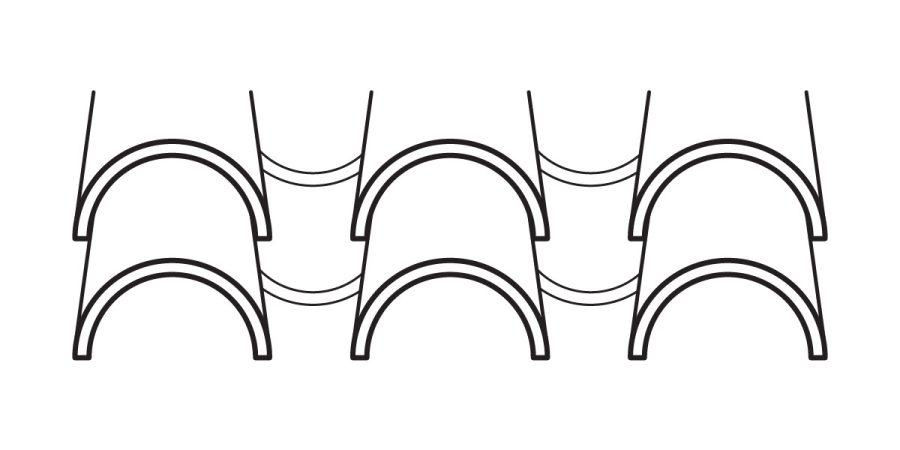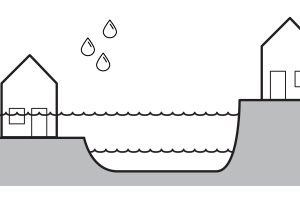Introduction & Rules of Thumb
Roofs, when pitched should be (4:12) slope or greater.
- Pitched roofs generally have fewer problems than “flat” roofs.
- All roofs, decks and other flat surfaces should have a minimum slope of ¼” per foot (1:48) to avoid standing water. All ‘flat’ roofs always have a slope… and there is no such thing as a ‘flat roof’ in reality.
The cost of roofing is generally minor compared to overall project costs. Therefore it is best to design and specify quality roofing systems, this is not the area of the project to value engineer a cheaper product or system, as it will cause problems later.
Estimation
When describing roofing material and estimating size, SQUARES are used. SQUARE = 100ft2
Cool Roof aka Reflective Roof
A roof covered with a light-colored material that reflects more of the sun’s heat than it absorbs.
- Generally the roof should have a minimum reflectiveness of .65 when new and a three-year aged value of at least .50 (in order to be considered a cool roof according to the EPA’s Energy Star cool roofing requirement.) The lower value over the years comes from dirt buildup and dulling of the materials over the years.
- Buildings with cool roofs are shown to have lower cooling needs, reducing energy demands and help reduce the heat island effect in urban areas.
- Most appropriately used in climates where cooling degree days exceed heating degree days,
- Internal-load dominated buildings in cool climates may also benefit.
The lighter colored roof may create glare problems for adjacent buildings and also creates an aesthetic consideration, so while this is a benefit for your building, to be a good neighbor, consider this.
Types of Roofing
SHINGLES
Small units that are overlaid on each other and intended to shed water, rather than creating a watertight seal.
Shingles and tiles are the oldest type of manufactured roofing material.
MATERIALS
ASPHALT: Fiberglass shingles are made from a composition of felt, asphalt, or fiberglass with mineral stabilizers and granules. Available in limitless colors and shapes.
WOOD: Most of the time manufactured from Cedar. Comes in grades (blue label being the best).
- SHAKES: Wood that is manufactured by hand splitting, creating a rough, irregular surface
- Laid out so that only a portion of the shingle is visible. Visible portion = EXPOSURE
ROOFING TILES
Roof tiles are typically made from slate, clay, or concrete. These are heavier materials and therefore the roof structure must be strengthened to accommodate.
- SLATE TILE: ¼” thick slate tiles are laid out like shingles, with sides and ends overlapping, and are attached with copper or galvanized nails drive through pre-punched holes in the slate.
- Slate is very expensive, but it is fire resistant, and very durable, with slate roofs lasting over 100 years.
- CLAY TILE: Available in many colors, patterns, and textures. Made from the same clay as brick, and is attached by nailing through pre punched holes. It’s expensive but very durable, fire resistant, and attractive. There are many different profiles to clay tiles and many have come to identify certain architectural styles.
- CONCRETE TILE: Manufactured from portland cement, available in several styles and colors. Less expensive than clay, but still durable and fire resistant. Concrete tiles can be colored and formed to replicate the look of other styles, for a fraction of the cost.






Leave a Reply
You must be logged in to post a comment.